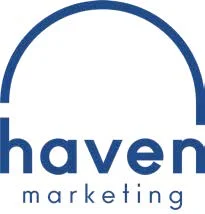Amy shares her thoughts on what successful businesses are doing well during the pandemic, and what you can do to ensure your business is well-positioned to thrive in a post-pandemic world.
Why are some businesses thriving during the pandemic while others are struggling?
I think the difference between “thrivers” and “survivors” has been a willingness from thrivers to accept the current realities and embrace creative solutions. Their ability to make adjustments and adapt allowed them to continue to serve their customers in the short term, and created new revenue streams they might never have considered otherwise.
In the long term, businesses who took a new approach and stretched to reinvent themselves will be well positioned to grab market share from competitors who pumped the brakes or hunkered down during the pandemic.
At first, the “hunker down” strategy might have felt like a safe bet, but twelve months in, businesses who are still pumping the brakes are missing opportunities to evolve and stay relevant to their customers.
The way consumers have decided to shop for goods and services has changed and continues to change rapidly because of the times we’re in. We were headed in this direction already, but the pandemic has fast-tracked this development of virtual/digital business models by about five years.
As more restrictions are lifted, businesses who expect things to return to the way they were pre-pandemic might find they’ve been left behind.
Consumers have different expectations now; we’re not returning to a 2019 world.
What are some ways local businesses are getting creative?
Scoop DeVille is a local Philadelphia ice cream shop operating since 1989. When the pandemic hit, foot traffic came to a halt. The owner, Spencer Phillips, recognized that while people no longer needed his large event ice cream cakes, there was a demand for the smaller 8” cakes that could be delivered directly to customers for birthdays, anniversaries and holidays. People were not only ordering small cakes for themselves, but also sending them to family and friends.
Delivery sales took off, creating a new revenue stream. Spencer installed pick-up windows in his storefronts for customers who still wanted to phone in their orders, then opened three express stores.
The express storefronts are really just refrigerated warehouses that allow delivery services like UberEats and PostMates to pick up orders. All Spencer needed to do was keep those shelves stocked with his premium ice cream products.
Spencer then approached other local eateries to essentially offer the best of both their menus through “virtual restaurants”.
Philly Burgers and Shakes, for example, is an online restaurant whose menu is a fusion of Scoop DeVille and the pub food of Top Tomato. Customers can one-stop-shop online for the comfort foods they crave, while both businesses benefit from an entirely new revenue stream.
Spencer’s flexibility allowed him to not only sustain his business, but expand it, with new locations and several more ideas for virtual restaurants. He’s in a great position when we emerge from the pandemic.
How are clients retaining customer loyalty?
We’ve seen time and again that communities, especially in times of crisis or uncertainty, are there for their local businesses. Especially when they see those businesses willing to put themselves out there, trying to stretch and reinvent what they’re doing to meet the new needs.
People will meet them where they are and actually go out of their way to use that service or business.
Anthony Iannone has been in the restaurant business for forty years. Last spring when on-premise dining shut down, he realized that if his restaurant Anthony’s Creative Italian Cuisine, was going to survive he needed to shift the restaurant’s focus to curbside pick up and delivery, a service that wasn’t part of their business model and would need to be built from scratch.
There were bumps in the road. On Mother’s Day weekend the restaurant was overwhelmed with orders, lines of cars waiting for pick up and late deliveries. But people understood what the restaurant was trying to do and Anthony’s customers were forgiving. They went back and refined their order process, fixed what wasn’t working, and reworked the menu multiple times to make it more conducive to delivery.
Anthony and his staff were working seven days a week to keep their doors open and their customers rewarded those efforts with their loyalty.
Fast forward to Valentine’s Day Weekend 2021. Although Anthony had sixty to seventy fewer seats due to dining restrictions, he was just ten meals short of the number of meals sold Valentine’s Day 2020, right before the pandemic hit. Delivery and curbside was a huge part of that success, though it hadn’t even been an option just a year earlier. When restrictions lift, if Anthony can retain just ten percent of the curbside delivery, it will be a huge win.
Anthony’s willingness to step out of his comfort zone and try different things, and keep trying until he found the right balance of what worked, is paying off for him with a loyal following of both old and new customers.
What can local businesses do to optimize tight budgets right now?
First, let me say I understand, because haven is in the same situation. But when things start reopening, they’re going to reopen rapidly, maybe even more rapidly than they shut down. And it’s imperative that businesses are poised and ready.
Even though it hurts to spend money right now, business owners have to invest in their businesses to bring them up to 2021 speed, which looks very different from pre-pandemic 2019.
When the floodgates open, possibly in late spring or early summer, businesses who are making the investment now will lead the pack while those who have done nothing risk forfeiting market share.
We feel a very serious stewardship towards our clients and their budgets and we’ll do everything we can to stretch and add value so every dollar is optimized.
Investing in your digital and virtual platforms will be a key driver moving forward.
We’ve worked with The Hughes Center, a cosmetic surgery center and medical spa, for more than a dozen years, and they have been very forward-thinking during the pandemic. They had already allowed us to build them a digital storefront prior to the pandemic to sell their high-end beauty products and prepaid services.
When the pandemic arrived, they quickly expanded that platform. Typically, The Hughes Center hosts two in-person events in the Spring and Fall, which are significant revenue drivers for them. We took the Spring event completely online and their loyal customers were happy to accept the new format. The center was able to generate a healthy revenue even though the event had completely changed.
By the Fall we perfected that model. We incorporated Facebook Live, added weekly specials and promotions and promoted through their social platforms. The Hughes Center also pivoted to online consultations which helped them remain engaged with their clients.
Even though their doors were physically shut, they had revenue streams stay open because they invested in their virtual and digital platforms. Now they’re adding staff.
In the future, hybrid events that combine an in-person element with a digital option will be huge, and The Hughes Center is ahead of the curve.
How important is social media for a local business?
Consumer expectation these days is that they should be able to go to your website and either get the information they’re looking for or purchase your goods or services.
They expect to find you on social media. It makes little difference if you’re a big budget Fortune 500 company or a local business with a staff of three, they expect you to be virtually visible and available.
Social media is a great way to create a lifeline to your customers by posting, responding, interacting, following back. In other words, being an engaged member of the community, and we’re all for that.
However, posting something to your page a few days a week rarely moves the needle when it comes to generating new business, gaining visibility or creating demand for your products.
Did you know the average reach for an organic Facebook post is only 5%? That means only a handful of your fans see your non-promoted content. In order to substantially increase that and drive engagement, you need to work with someone that knows the constantly changing nuances of digital algorithms.
We like to say that just because Mark Zuckerberg, Google, Instagram and all the rest have made it so that you can manage your company’s social media pages doesn’t mean you should.
It’s so important to understand there’s hardly any organic exposure for businesses on social media platforms anymore. If your goal is increased visibility, increased reach, increased sales and leads, you need to understand it is a pay-to-play arena and most businesses are not well-versed in how to play.
Trying to DIY social media is not the most effective use of an owner’s time or their budget.
Outsourcing your social media to a team of experts, however, can be one of the most cost-effective ways to get maximum value out of your marketing dollars, and actually save you time and money in the long term.
Our clients who are thriving right now have allowed us to create and manage social media campaigns on their behalf. We create these very targeted campaigns with custom audiences that translate into conversions, whether that’s filling out a form, driving traffic to their websites or just getting that potential customer to raise their hand and identify themselves.
That’s the goal on behalf of our clients, and how we do that effectively is very specific and very targeted.
And we continue to optimize those campaigns on an on-going basis, which is the time-consuming part. It’s not as simple as taking a picture off your phone and thinking you’re going to get traction and drive business from a post. Our social media team is constantly adjusting our client’s campaigns so they consistently get results that outshine anything a local business can do on their own.






